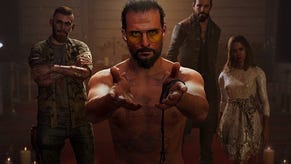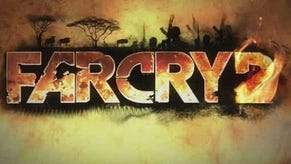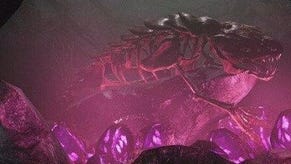Far Cry 2
Open to choice.
Far Cry 2 is not overshadowed by Crysis and is not a helpless attempt by Ubisoft to milk money out of the brand. The heart of this first-person shooter sequel-by-a-different-developer is choice - choice in a big free world. Not a particularly original idea; most current-gen reboots boast the same sort of premise. But it's enough to set Far Cry on its very own unknown course - one with a rather surprising amount of role-playing mechanics, buddy characters, vehicles and malaria.
That's not Africa you're seeing, either, but a fictional land modelled on the enormous and troubled continent. "We never named the country," Patrick Redding, Far Cry 2 narrative designer and our host during a recent hands-on, tells us. "There's two reasons for that: one, we didn't want to obviously deal with all the complexities of a modern conflict in Africa, but also there really isn't one country in Africa that has all of the environments we wanted. So for us there were definitely advantages to having a fictitious setting."
It also lets Ubisoft dream up two major factions for players to ping-pong between: the Alliance for Popular Resistance (APR) and the United Front for Liberation and Labour (UFLL). Undertaking missions increases your standing with each and also earns you diamonds, which are the game's currency. Infamy is another result of your actions, and can help or hinder you. Relationships run deep in Far Cry 2; there are various characters in safehouses who offer ways to spice up your missions. Meet Frank: he wants you to blow up a pipeline. Do this and he, like others, will be more likely to let you in on secrets and offer you more tasks and help as you go.
Help takes the shape of "buddy rescue". You activate it when you are seriously wounded during a fight, prompting your buddy to spring out of nowhere, help you to your feet and carry you into cover so you can recuperate. Handy, but not without consequence; not only will you lose your weapons when rescued, you will also be in a bad way and need an urgent health injection. And if your buddy is killed, he will vanish from the world for good.

Carrying out tasks for the civilian population is another way to look after yourself - not a mandatory one, but rich in reward. You begin your adventure by contracting malaria, and civilians pay you in medicine that permanently boosts your maximum health. The country is war-torn, and they want out, and reckon helping you helps them. Become too infamous, though, and civilians will fear and avoid you, effectively cutting off your health upgrade system.
Finding the root of your malaria is central to the plot in Far Cry 2, as you pursue a faceless answer waiting at the end of a trail of clues - the comparison to Apocalypse Now is bandied about quite readily. You're in for plenty of twists and turns, mainly as a product of the social network you slowly build as you decide who you can trust. "All of the additional mechanics are really designed to play into these larger themes of trust, betrayal, social interaction, infamy and reputation, so it gives it a little bit of an RPG-like aspect," Redding says, adding that you can also ignore them if you're less bothered.
Health is not the only statistic you can bolster. You can use your diamonds to unlock more powerful weapons at gun shops by interacting with a battered PC terminal within. Once you buy a weapon it's added to a crate replicated in all of the game's safehouses. Redding says there are 30 different firearms, and you can bolster your firing skill by reading manuals. These increase your aiming skill and the weapon's power, and your choice of specific gun is reflected in how fast it deteriorates and how often it jams. Rusty-looking guns will be rubbish, while AK-47s will be reliable and US assault rifles accurate but short-lived. Like most things in Far Cry 2, you will have to use your eyes to determine what's worth picking up and what's going on; there's no real HUD to speak of, a decision made so objects feel as much a part of the game world as possible. There is vehicle progression as well - "no helicopters", but Jeeps and dune buggies and fishing boats with deeper hulls.

You won't be able to hold all of your weapons at once, either; Far Cry 2 adopts a slot-based system. One slot is reserved for one-handed weapons like machine-pistols and handguns, another for beefy ballistics like shotguns, rifles, sniper rifles and bazookas. Interestingly, one commands your machete and also your grenades and explosives; you need to hold them in two hands, not lob them while firing your pistol like a maniac. Redding decided on this to make choosing your weapon load-out an "interesting choice".
Choice again. The aim is to present you with an openworld and multiple ways of achieving your objective, like Oblivion or Mercenaries 2 or Crackdown or so on and so forth. Luckily Far Cry 2 has tools to help you find your way, like a paper map and a compass, which you can decorate with information by using some Jack Bauer-style binoculars. Interesting points are added automatically, and you can also gauge wind direction, which comes in handy when doing a spot of arson in the arid lands. You have a phone as well - to receive incoming calls from buddies ready to share more information, although it's nothing as developed as GTA. Phone and map are handled by one button, as is the general interaction button; it all fits well on a console pad.















